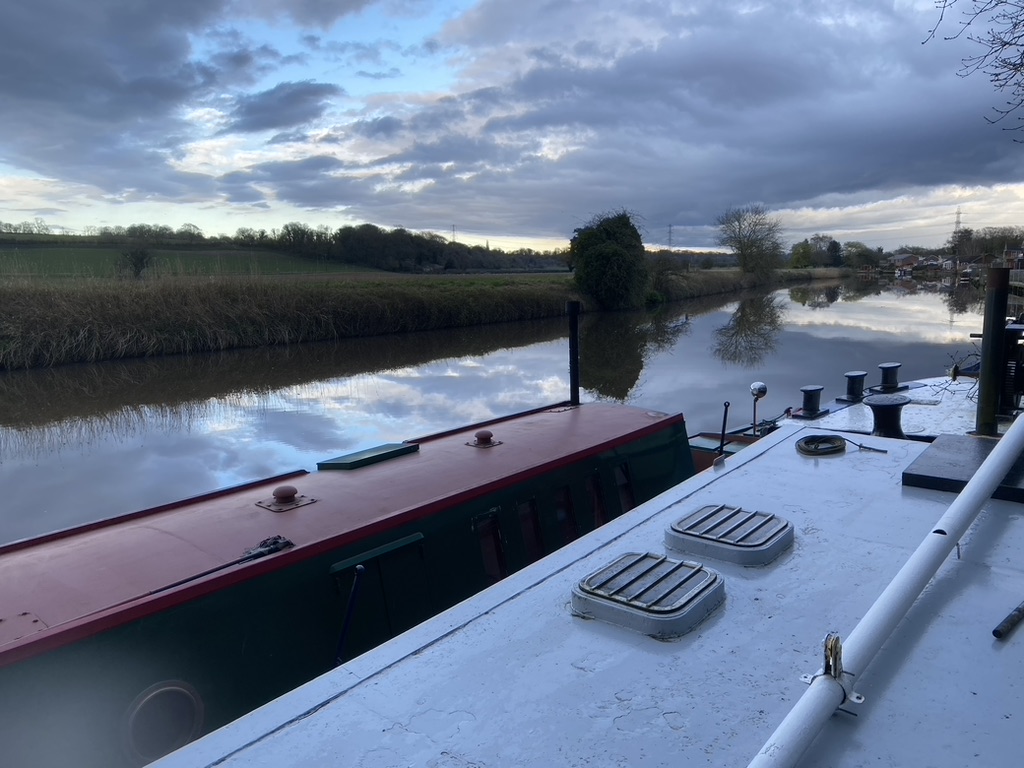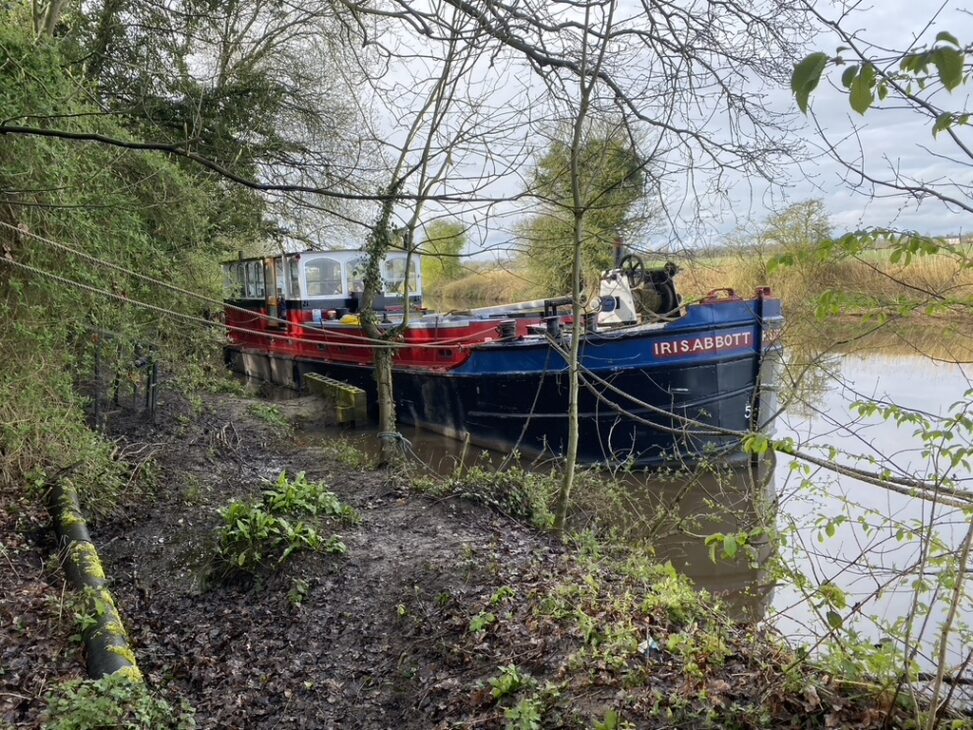It’s been a while since I posted an update – nearer two months than one, in which time lots has happened on board Iris Abbott, pretty much all of it good! There is lots to say so this will be split over a couple of posts.
The big issue identified pretty much as soon as I’d arrived in Acton Bridge was that Iris couldn’t produce enough power to sustain herself. A new electrical system was needed but was going to take some weeks to plan, source, order and deliver. Meanwhile I was stuck at Acton Bridge. I couldn’t reliably generate enough power to run the compressor that was needed to start the engine and whilst I had enough air pressure in the tanks for an engine start to get me to the new mooring, I couldn’t say with confidence that I could get back to receive deliveries of equipment, and getting lots of large and heavy equipment on board at the mooring was a non-starter, as was trans-shipping it all on Bream. The local team from Canal & River Trust were brilliant with me, given that I was on a visitor mooring for weeks, though I only actually had any other boats moored nearby for a handful of nights, the whole time I was there, so no-one was especially inconvenienced by my being there.
In the last week of February I was treated to the amazing sight of a murmuration, which returned to the same spot, just downriver, every morning and evening for about a week, just before sunset. I had several goes at photographing and filming them, with limited success, but do like this early morning shot, with the moon setting in the background.

The first part of the new electrical system to be delivered was the new battery. A huge beast at 960kg, plus a steel battery box taking the whole lot well over a tonne. Thankfully the cells can be moved individually, and are “only” 40kg each. Dave turned up with them on a trailer and friendly neighbour Leighton kindly assisted with his fork lift truck to get them to the top of the steps by the boat. From there it was a matter of carrying them one at a time, first into the wheelhouse, and then down the stairs. A scary moment came when the pallet tipped slightly as one was lifted and three cells ended up on their side on the steps, but no damage was done, thankfully.
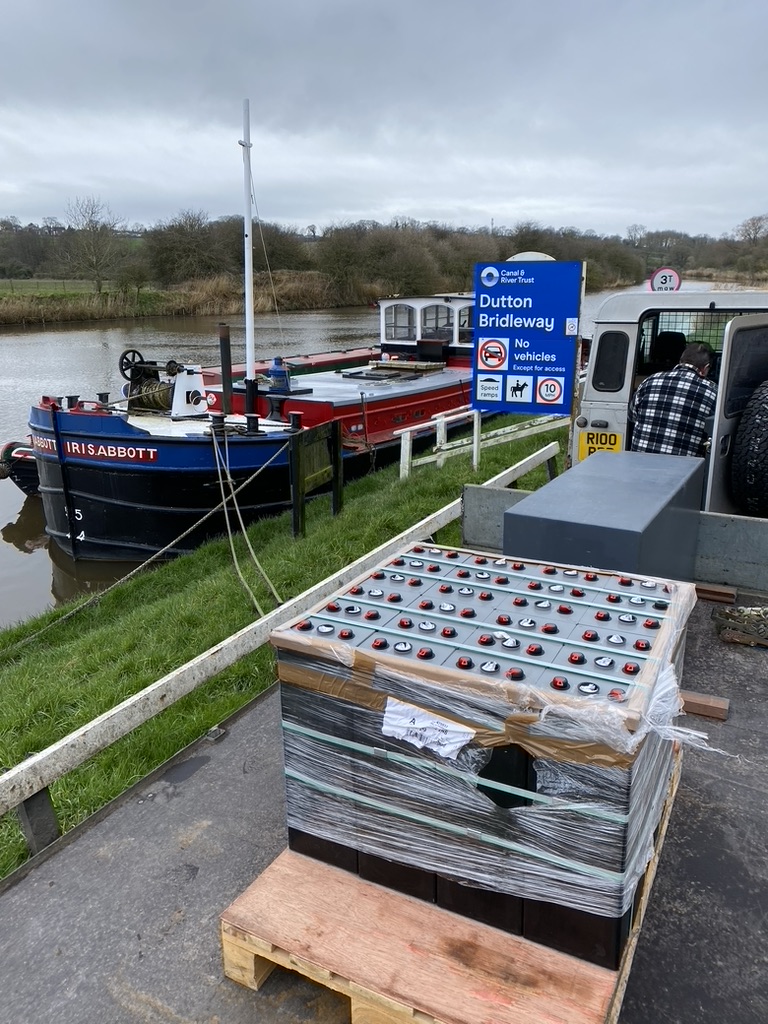

Getting the battery box on board had been an achievement in itself. It took all the strength that two of us could muster – plus some ingenuity from Louise – to get it down the slope then up onto the roof. Finally, it was lowered into the main cabin with ropes. A huge hatch in the middle of the roof, just ahead of the wheelhouse is the only way to get larger items in or out of the main cabin, and this was the first time I’d needed to use it. I was very happy to see it land safely with no damage to anything, including the two of us. The drop is about 8′, so not a moment to get it wrong.

The box was put into position in the newly cleared utility space, and the batteries carried down the steps one at a time, before being lifted into position. That was more than enough work for one day, but it felt like a huge step forward, even though they couldn’t yet be used.
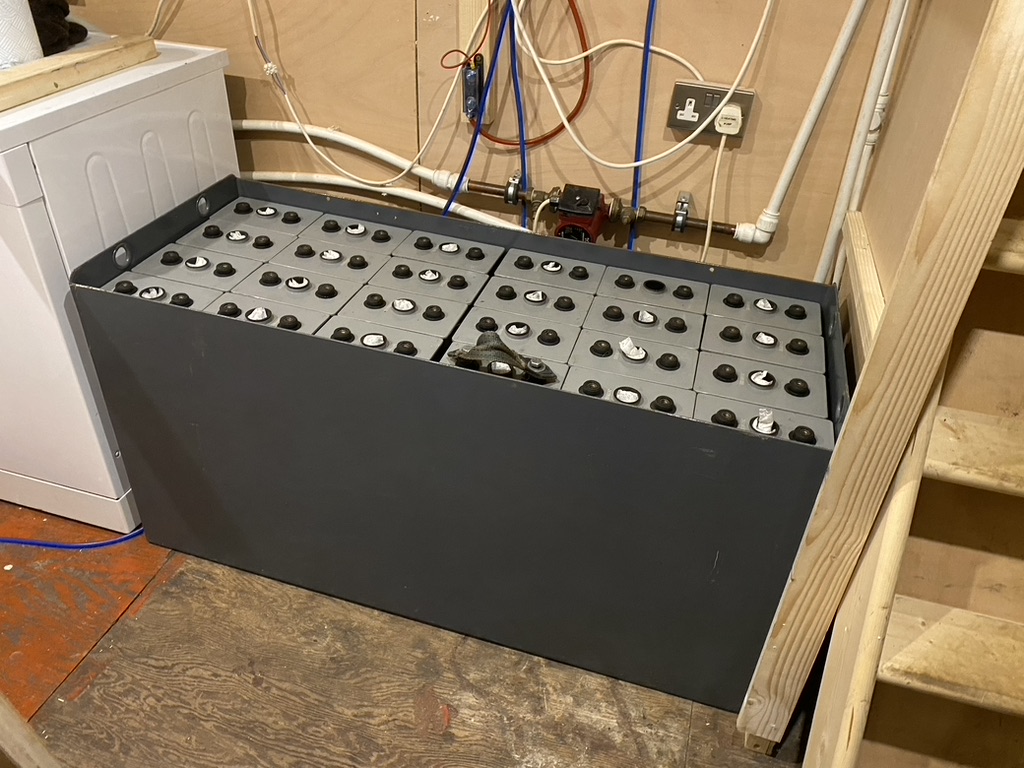
Dave returned with the pipework (water fill and gas venting) as well as the interconnect cables for the battery, which was all connected up at his next visit. We had a long conversation about what was going where and I was left to puzzle out how we might hang a 51kg inverter and assorted other devices onto the wall. For all that this system had been specified and ordered at haste, a lot of thought needed to go into it. This will potentially be my power supply for the next decade or more, so it needs to be right. The step up to a 48V battery brings complexity, but felt like the right choice. Happily everyone I’ve spoken to so far about this who has an appreciation of the technology, agrees with us.
The rest of the systems, primarily the huge inverter, but also a range of other equipment was delivered on 1st April. Dave had brought a friend along to help with the unloading but also as crew as the arrival of this equipment meant that there was now no need to stay in Acton Bridge, and I could take advantage of extra pairs of hands to move Iris to her new home.
With three of us, and the river in a good mood, it was a relatively simple task to move. I have to admit she didn’t start first time, but there was just about enough pressure in the tank for a second go, so we got away with it. This air start is a fascinating feature but it does add a whole layer of complexity. I can see why they have all been replaced with electric starts on other boats (though I’m determined to persist with it.)

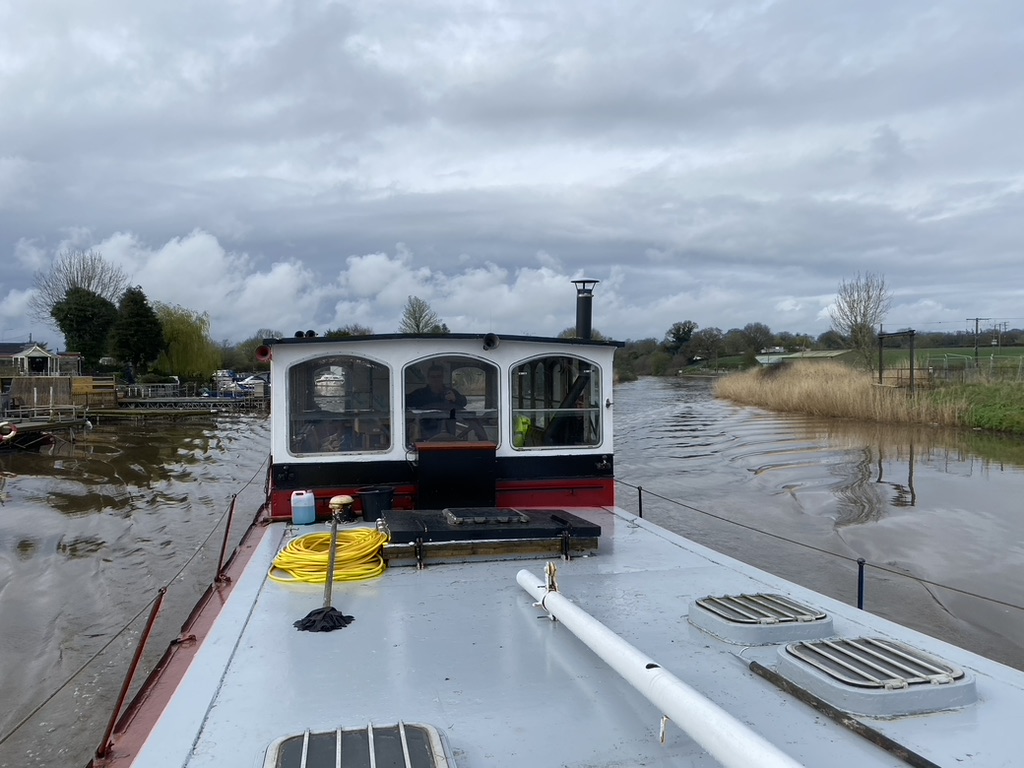


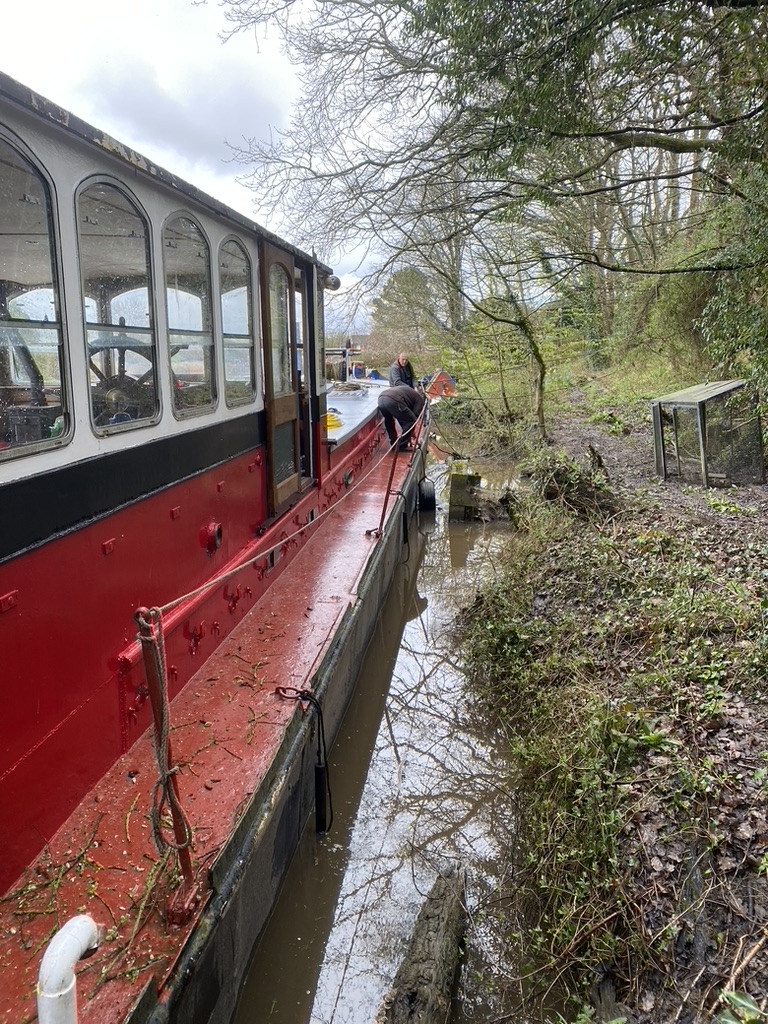
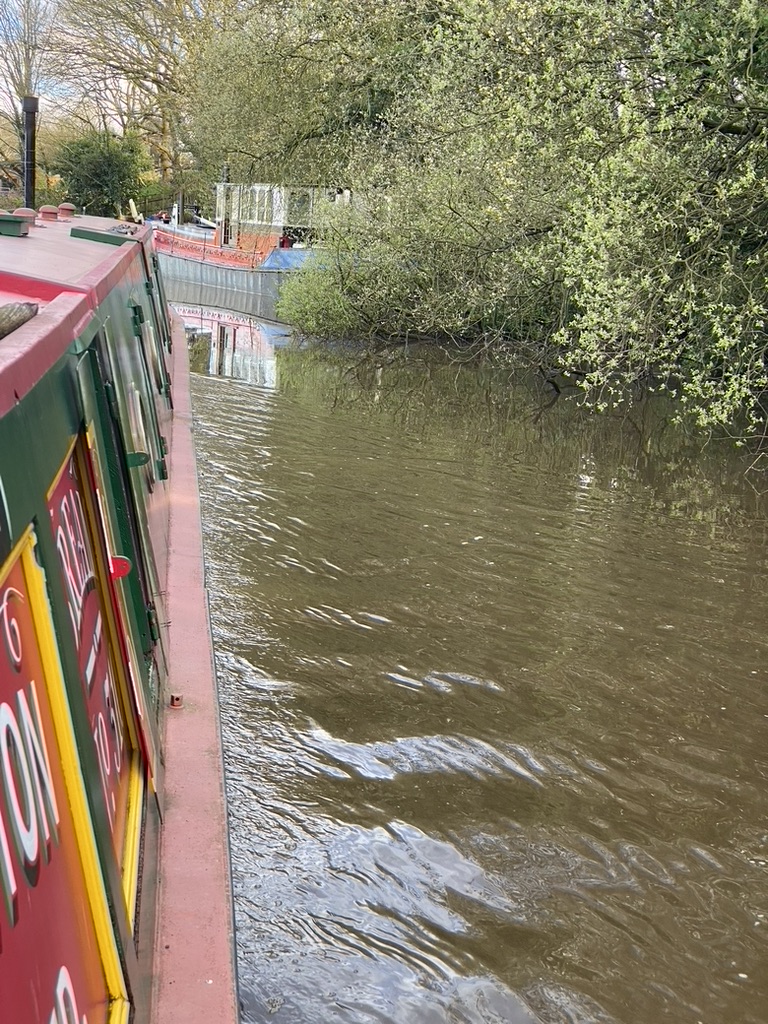
It’s only a short trip up the river to the mooring. The bank was horribly muddy, but I was prepared and had my wellies to hand, and the other two stayed on board.
Having tied Iris in position, I walked back to Acton Bridge and picked up Bream, while Dave got on with installing some of the battery connections. I had planned to deliver them back to their car on Bream, which was a lot easier than them walking back as Dave had tools with him. In the fading light we headed a short way upriver from Iris to wind and as I was about to do that the engine on Bream died. I’d run out of fuel! with all the other things that have had my attention I’d missed a really important one (and Bream has no fuel gauge.)
I steered her towards the side but we very gently grounded. However that slightly simplified things – I quickly decided that I’d try to refill and start her without deploying the anchor as the river was only moving very slowly so I had a few minutes before she would work herself free of the mud. Having crew on board made this less risky that it sounds, written down.
I have a second fuel tank in the bow (for the stove) so as quickly as I could syphoned fuel out of there into a drum, and from there into the main tank. I’ve become a bit of an old hand at filling the fuel while standing on the gunwale, though admittedly had never done in in the middle of the channel before. We just about got away with it, and amazingly she started almost immediately. Phew!
I delivered my crew back to Acton Bridge before putting Bream back alongside Iris, reconnecting the power supply between them and settling in for my first night.
